Fume Extraction, Perfected
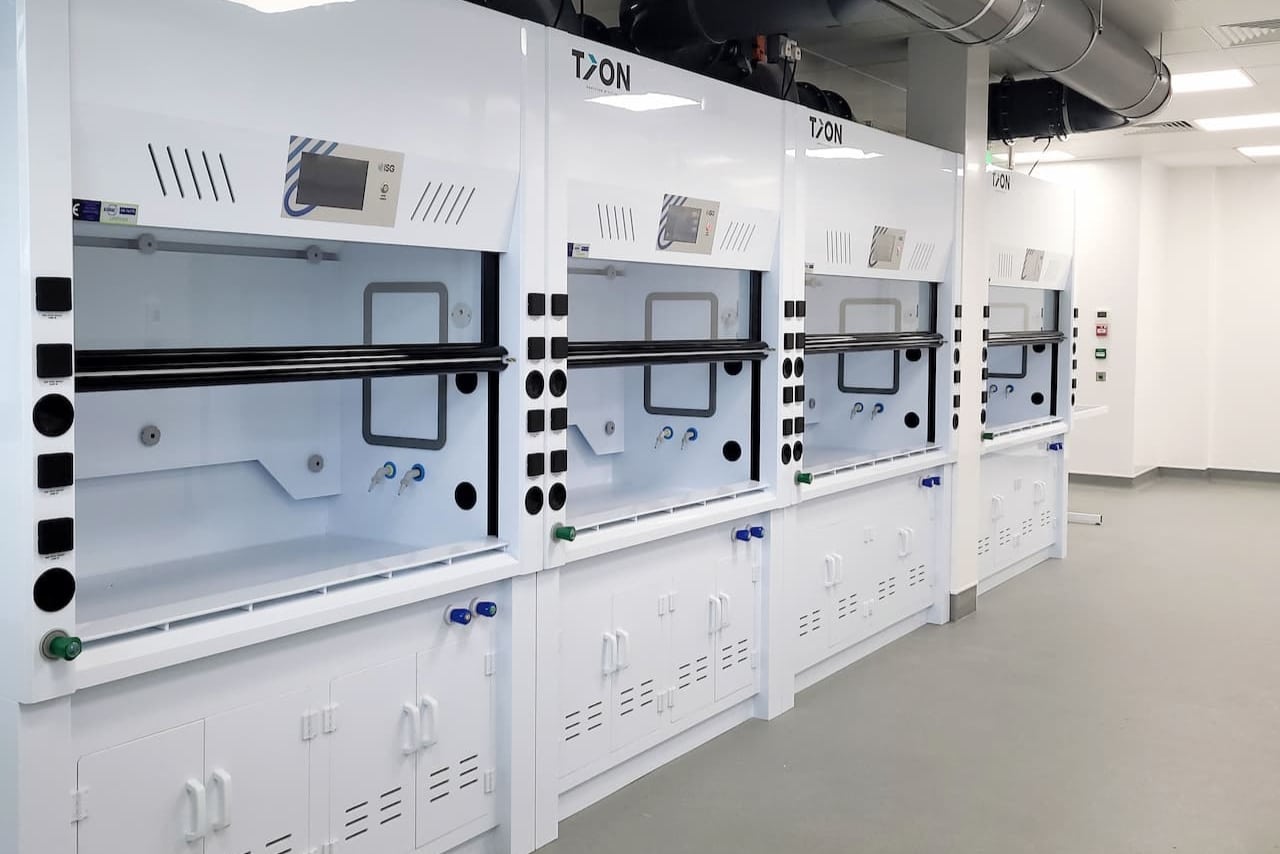
For over 15 years, TION has been at the forefront of designing and manufacturing high-performance fume cupboards. Our solutions effectively contain hazardous vapours, gases, and particulates generated during chemical experiments, ensuring a safe working environment for your staff.
We use state-of-the-art electrical components and premium materials to enhance the durability of our products. Whether you need a standard unit or a bespoke design, we can provide a fit-for-purpose solution tailored to your requirements.
Our team collaborates with construction companies, architects, project consultants, and mechanical engineers to deliver high-quality fume cabinets that meet industry standards. To streamline your project, we can also supply technical documentation, including CAD files, datasheets, and BIM models.
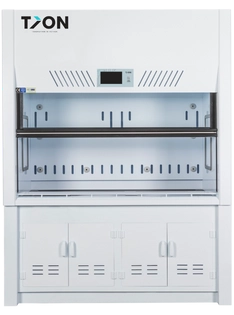
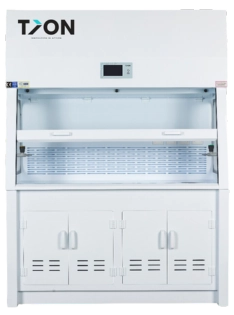
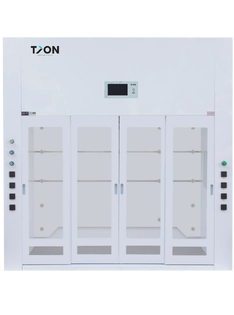
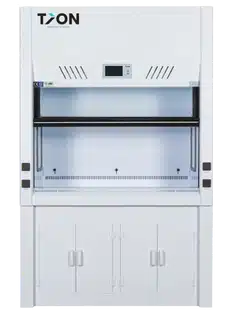
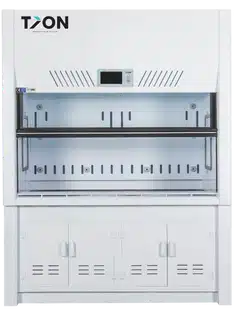
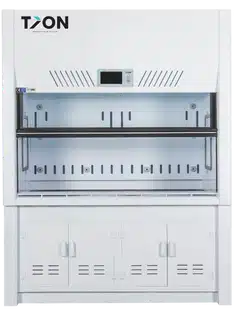
Traditionally, the cabinets are manufactured from powder-coated mild steel, stainless steel or polypropylene. While mild steel is considered more cost-effective, the corrosion-resistant properties of polypropylene make it more desirable.
So, how do they work? Well, the cabinets have four enclosed sides with an adjustable front sash to regulate access. A centrifugal fan pulls air into the cabinet's workspace at the industry standard of 0.5 m/s, drawing contaminants away from the operator. The air is then exhausted into the atmosphere using a roof-mounted ventilation stack or recirculated back into the lab.
It's important to note that in the UK, fume cupboards must be tested once every 14 months to meet BS EN 14175 standards. These standards dictate the design, testing, installation and maintenance of fume cupboards. For more information, please visit "What is EN 14175?".
While the rear baffles control the direction and distribution of air across the cabinet's work surface, the sash handle stabilises the inflow. It then passes through the interior of the fume cupboard, at which point it is either filtered and recirculated or exhausted into the atmosphere.
However, the extraction method used varies depending on the type of cabinet you choose. For example, ducted fume cupboards use PVC ductwork connected to a roof-mounted ventilation stack to exhaust fumes into the atmosphere.
On the other hand, ductless fume cupboards use HEPA or carbon-based filters to recirculate air back into the lab. While ductless fume cupboards reduce the installation and energy costs associated with ducted fume cupboards, the filters need reviewing every twelve months.
For more information on the differences between ductless and ducted fume cupboards, please visit "Choosing Ducted vs Ductless Fume Cupboards".
Other names include a fume cabinet, chemical hood or fume closet. People often confuse these phrases with extractor hoods or extraction arms found in commercial kitchens and industrial settings. It's important to identify this distinction when searching for your product. Otherwise, you could be left with a substantial amount of time wasted and little to show for it.
Among the tests performed are airflow testing, smoke visualisation testing, filter integrity tests for ductless cabinets and general inspections of the control system and alarms. These tests must be performed once every 14 months. Failure to do so breaches BS EN 14175 standards, which could place your staff in danger.
If a fault is detected, we will provide recommendations based on the unit's age, brand and part availability. We offer 1, 2 and 3-year service contracts with nationwide coverage and paperless documentation. That's right. We provide an online asset register that includes the location, serial number and certificates associated with each cabinet. It's simple, efficient and digital.
For more information on fume cupboard commissioning, please visit: "What Is EN 14175?"
How you operate the cabinet depends on the unit's specifications. Some products feature modern touch-screen control systems, while others use mechanical switches. If in doubt, reference your product manual before switching the unit on. On the other hand, gas taps, sinks and electrical sockets should function similarly regardless of brand.
When working inside the fume cupboard, keep your materials at least 150mm (6 inches) behind the sash to maintain airflow and minimise turbulence. You should also avoid overcrowding the workspace, as this can disrupt the airflow and compromise containment. Once finished, close the sash fully, switch off any services and leave the fan running if required to ensure any residual fumes are gone.
For more information on how to safely use your fume cupboard, please visit: "Top 5 Do’s and Don’ts of Fume Cupboards".
In contrast, a variable air volume system adjusts its airflow based on the sash height. Variable air volume controls reduce the volume of exhausted air while maintaining the required face velocity when the sash is lowered.
The airflow is controlled by an electronic damper positioned inside the ductwork above the fume cupboard, which communicates with the system's pressure sensors and bleed valve. Although it may seem complex, it's a relatively simple process that can reduce a fume cupboard's energy usage by up to 80%.
On the other hand, a CAV-enabled fume cupboard maintains a constant air velocity at all times, increasing the cabinet's energy usage. For more information on the benefits of variable air volume, please visit: "What Is Variable Air Volume And Why Is It Important?"
Read our Privacy Policy for more information on how we collect and process data.



No thank you
Read our Privacy Policy for more information on how we collect and process data.












